The history of fireworks, gunpowder, and why we love big ol’ fire
Remember, remember, the fifth of November… but gunpowder plots aside, why do we love a good fire? David Barnett looks at our fascination with burning old furniture, unwanted belongings and effigies

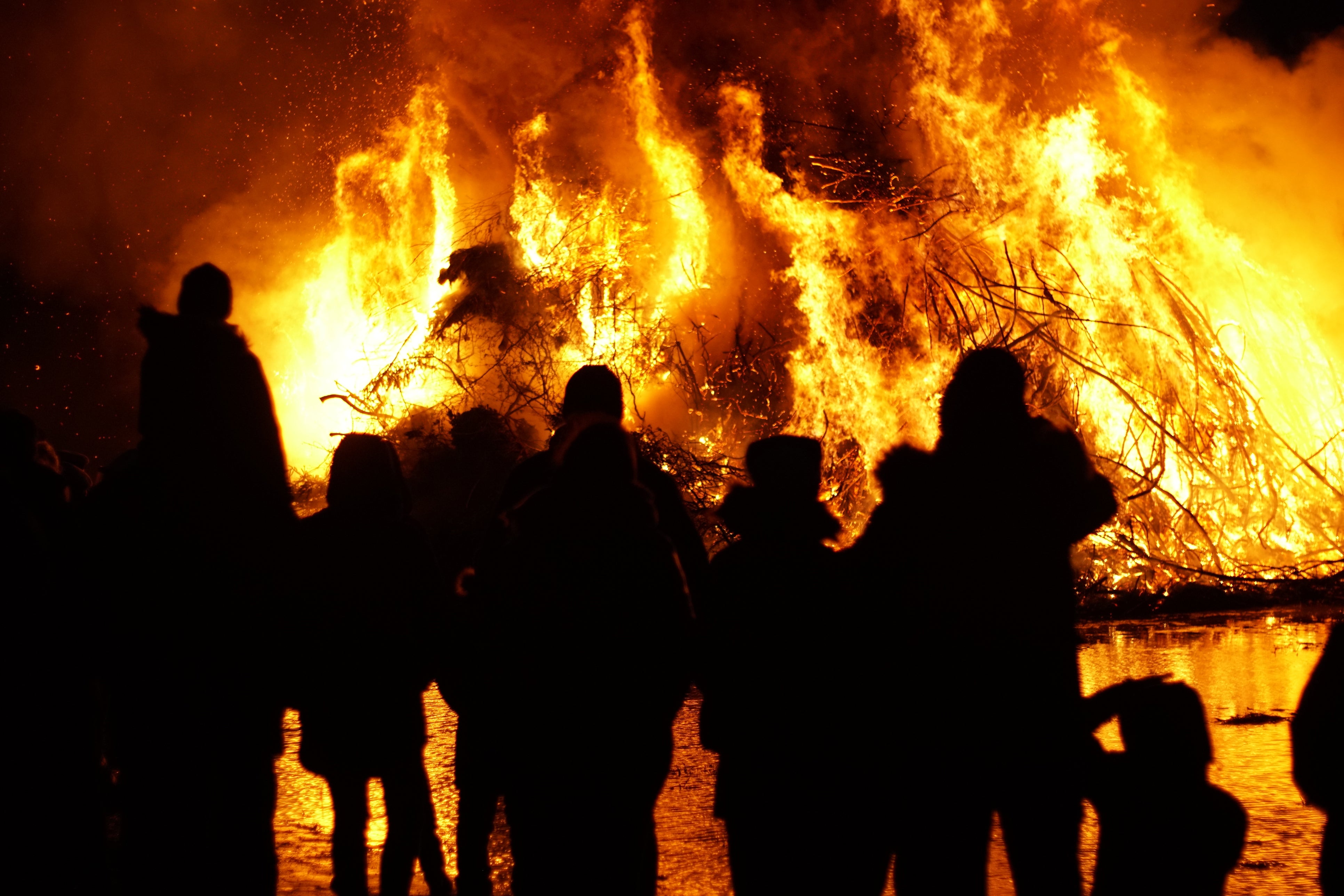
When our children were very small we took them to an organised bonfire, held in a municipal park. There was a huge, expertly engineered tipi of wood, which burst into life at the appointed time through the judicious use of accelerants. It was carefully cordoned off, to keep the onlookers at a safe distance.
There were fireworks, which appeared as if from nowhere, or somewhere distant, exploding with military precision in the black November sky, their almost mathematical spirals and showers burning onto our eyes. We all oohed and ahhed as they popped and banged in their predetermined course.
There were hot chocolate and hotdogs, branded drinks and popular sweets, sold from approved vendors. There was commentary and music from a local radio station.
It was all very pleasant but it felt a little as though we mortals had been allowed to enter Olympus for an evening, where the gods had laid on revelry and entertainment, and wrought the blaze and fireworks from their magic, feeding us with ambrosia and nectar from their endless larders. Then, as the last shower of industrial stardust faded in the sky, we filed out of the home of the gods and returned to our mortal lives. It didn’t feel like the bonfires I had grown up with.
Organised bonfires are the norm now, but they are the clean, yellow flames licking at the night. For the Bonfire Nights I remember from my youth, we have to go deeper into the fire, to where the wood is charred and blackened and dirty.
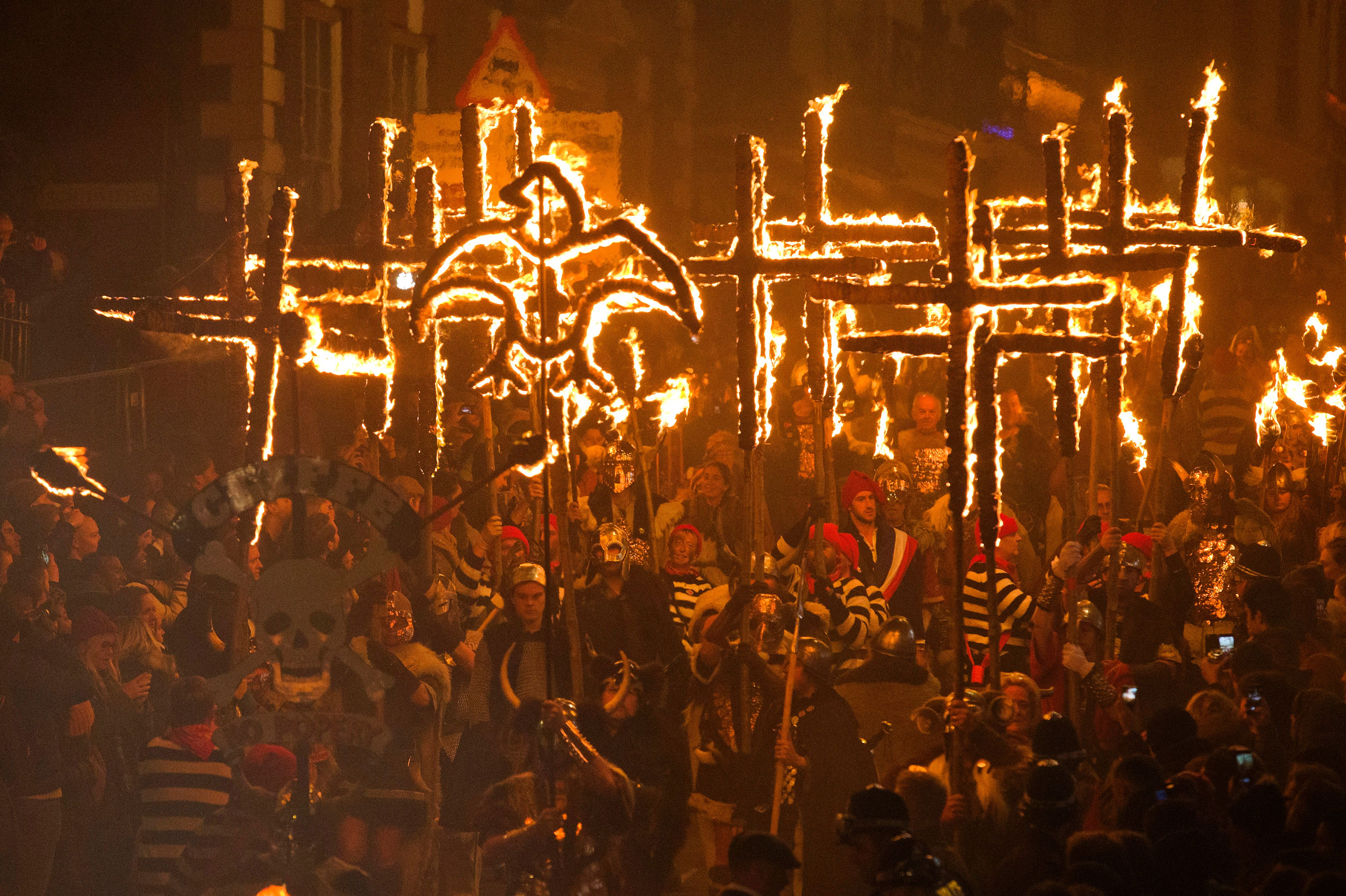
Growing up in the north of England in the 1970s and 80s, Bonfire Night was a big thing. We called it Bommy Night. We pronounced bonfire as bomfire. It was a lusty, disorganised, community thing, and it was one of the very best nights of the year.
On our street was a patch of land we called The Crow. I don’t know why. There was a small concrete pyramid hidden in weeds behind a ramshackle fence that never kept any of us out, signifying that there had once been a coal mine there that had been capped off. Between that and the street was spare land on which, every year, we built our bommy.
Bommy Night was something that engaged and involved pretty much everyone. One or two weeks before, the children would start to gather wood. We would go out in teams, scouring the hidden places that only children and cats know, the derelict factory yards, the post-industrial land that nature was claiming back. We would harvest the fruits of the fly-tippers, planks and boxes and pallets, rescued from fields and roadsides.
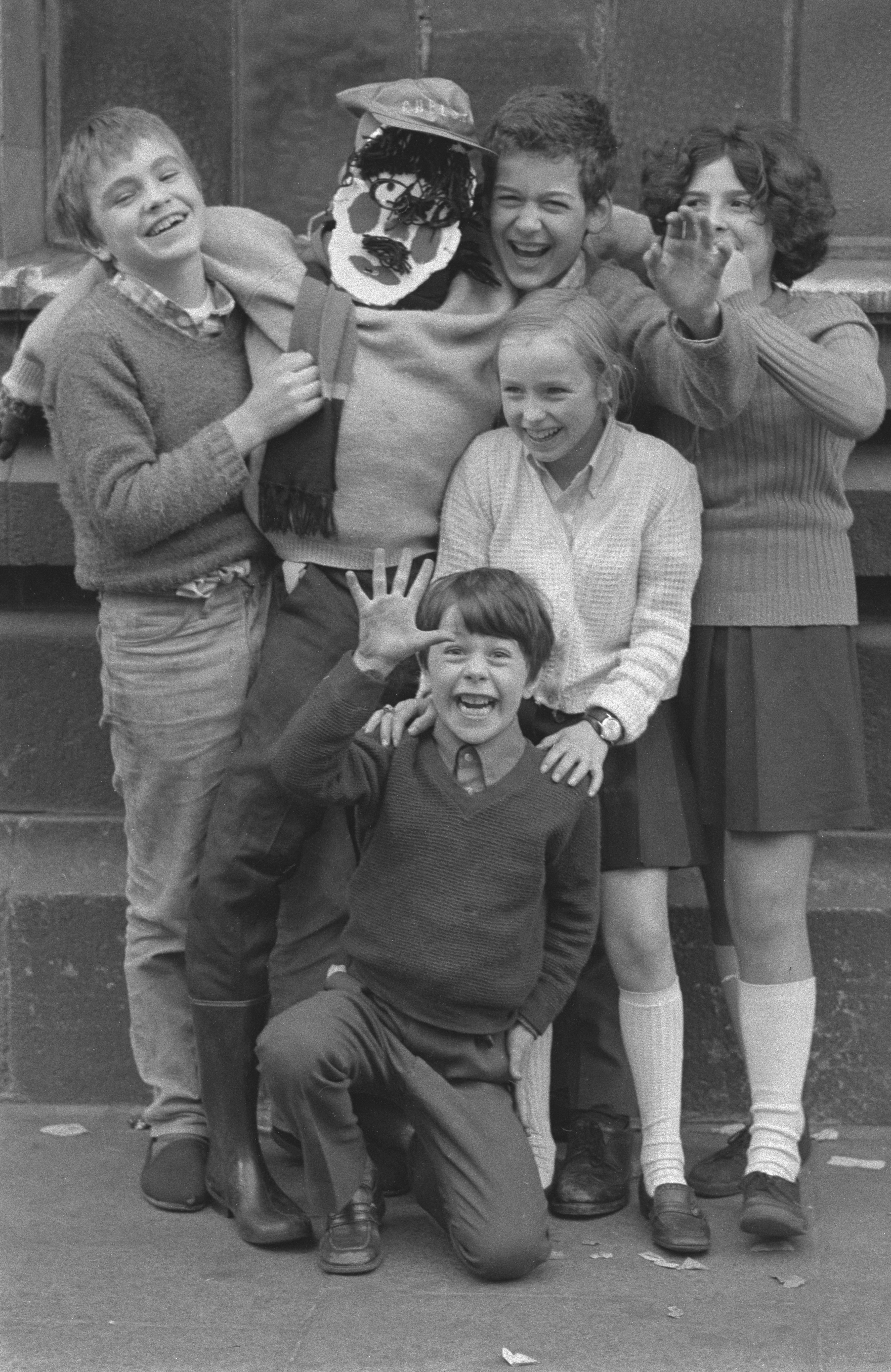
As autumn arrived and the leaves started to fall, adults would hoard bits of wood in their back yards, knowing that we would come knocking in late October, asking: “Any wood for t’ bommy?” We would transport it back to The Crow, and the older children, often under the supervision of the dads, would start to assemble it, creating a vast structure using knowledge that had been passed down through generations and was wound into their DNA. Someone, somewhere would procure a centre pole, the thing that kept the whole bonfire together. One year, an enterprising foraging team returned with an actual telegraph pole. Nobody knew where they’d got it, and we knew better than to ask.
It was when the bommy started to rise, like an ancient pyramid or temple of some far-off, long-dead culture, that the hazardous work began. Bommy Night was a territorial affair, each bonfire confined to one or two streets. Hunting for wood sometimes meant going into enemy territory, and there were borderland homes where you had to get in first to ask “Any wood for t’ bommy?” before someone from a rival street did.
And as the bonfires were constructed, the whole game entered a new phase: raiding.
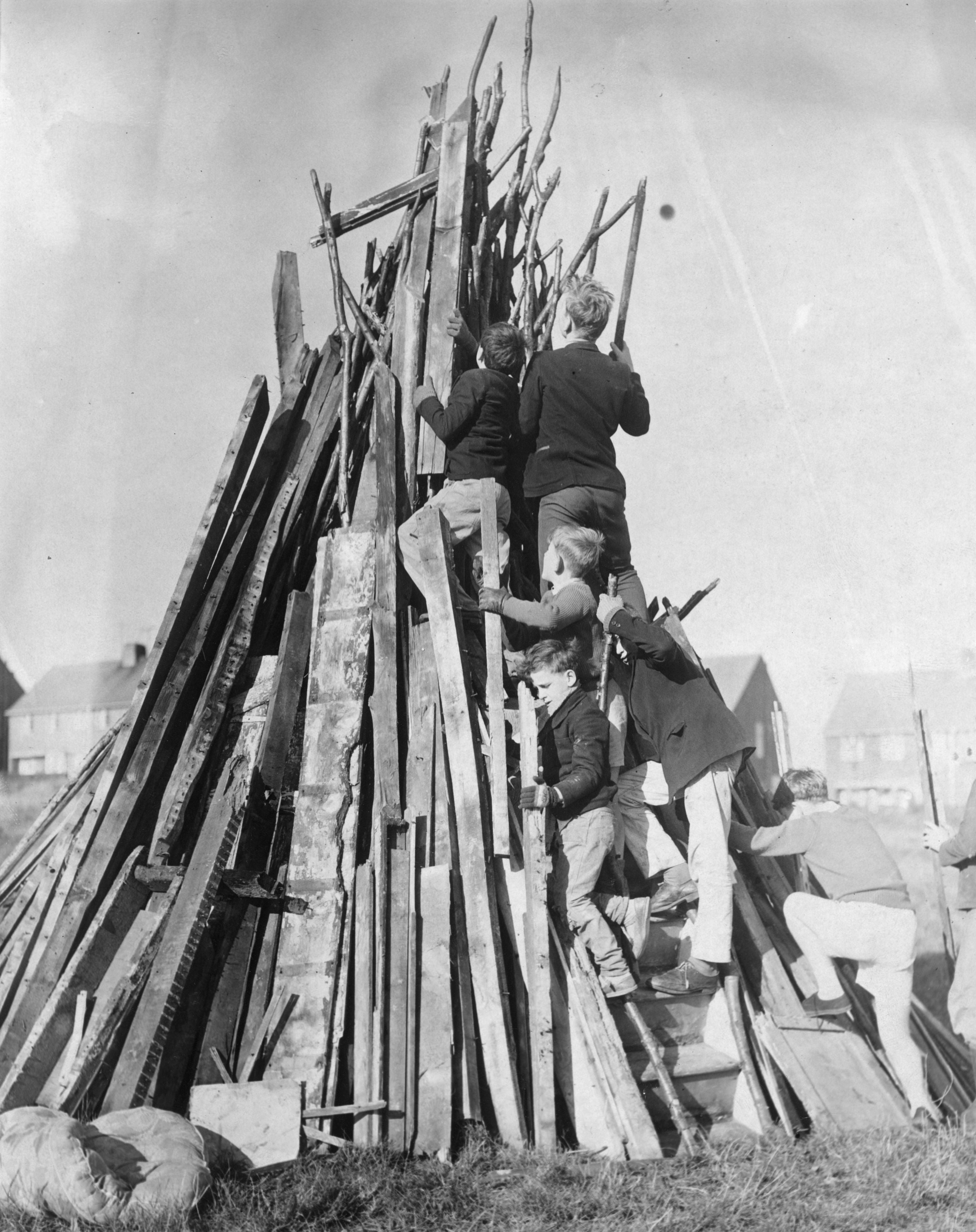
Those staging bommies in, let’s say, the rougher end of town would routinely send out marauding parties to steal wood. We would be organised into guard duties, patrolling our territory, as late as we were allowed out, just in case our hard-won timber was plundered. As I recall, it never happened. But the threat was ever present.
The plot was, in reality, the culmination of centuries of religious turmoil, which had gripped England and the world and posed a constant threat to the king’s predecessor, Elizabeth I, during her reign
And then, 5 November. None of this holding your bonfire on the nearest weekend. Bommy Night was Bommy Night, and that’s when you lit your fire. As the newly minted dusk fell early, the clocks having just gone back, the entire street would emerge and the dads would take over the lighting of the bommy. Catherine wheels would be nailed to the posts of the fence that surrounded the pit-cap pyramid. Rockets would be placed in an empty glass milk bottle, secured with a few stones, and would whoosh into the sky to explode over our houses. The mums would bring out trays of bonfire toffee, hard enough to break your teeth, and huge pots of black peas. On the edges of the conflagration we would inch as close as we dared and throw potatoes into the angry red embers, dragging them out with a stick, our faces pink from the flames. We would be handed sparklers, and write our names in the cold, brittle air with the trails of blinding, pinpoint light.
At some point the centre pole would buckle and fall, and everyone would cheer, rushing away from the crashing timber. Bommy Night lasted as long as the fire, and as it shrank and reduced to a glowing miniature sun, people would drift off, until there were just a few children left, cross-legged around the remains of the once-mighty blaze, dragging charcoal-black potatoes from the embers.
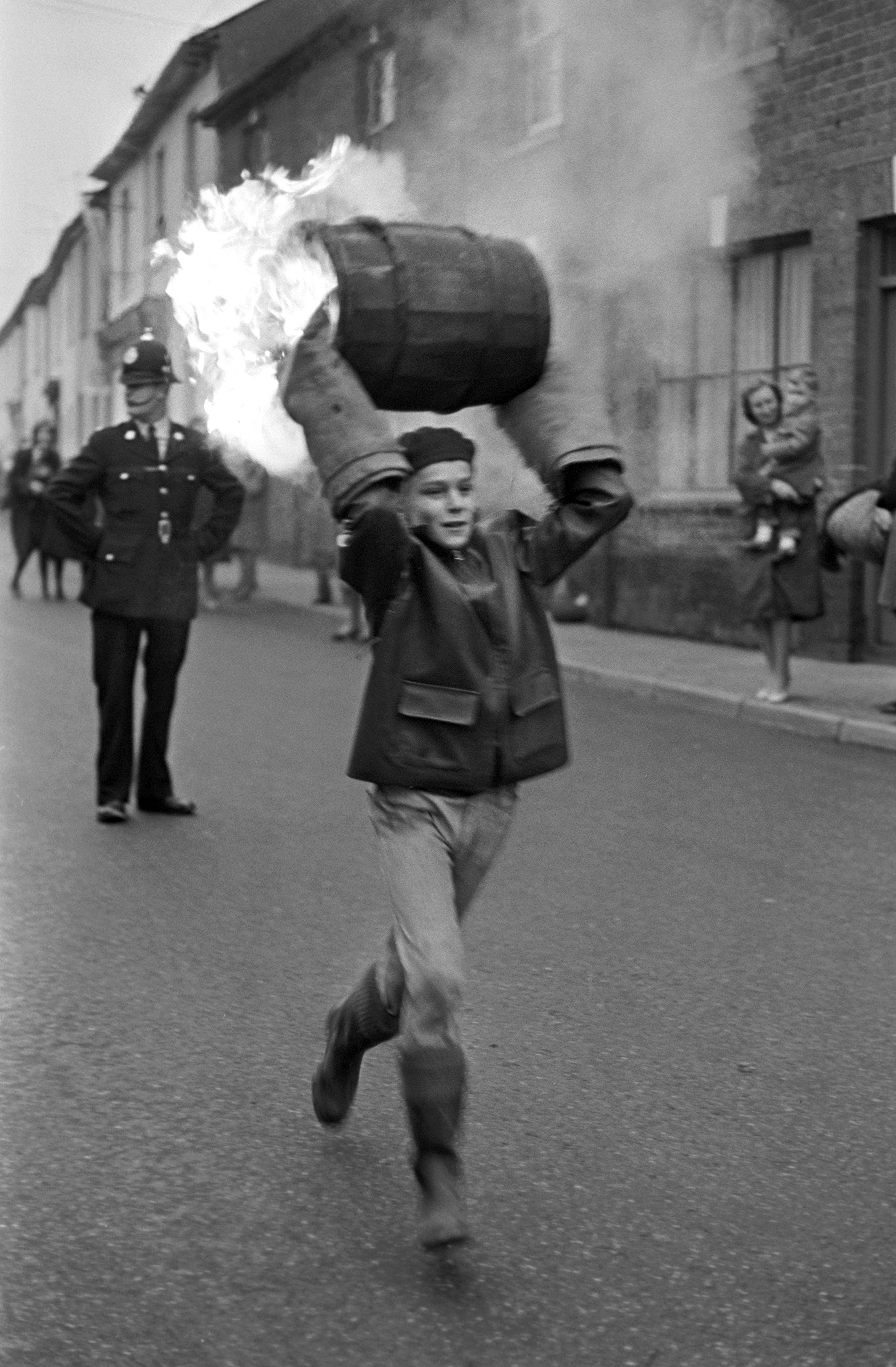
The next morning there would be a strange, saltpetre mist that wreathed around the streets, which you only ever got on the day after Bommy Night. The spent carcasses of rockets would litter the pavements, and you’d find one in your yard, and wonder at how close it came to your house. The bonfire would be a smouldering pile of ashes; the Guy long obliterated.
Ah, yes, the Guy. We knew that 5 November was held to mark the failed Gunpowder Plot, when Guy Fawkes and his co-conspirators failed to blow up the Houses of Parliament in 1606. Of course we knew that. We made an effigy of Fawkes, as everyone did. The Guy was made from old clothes stuffed with newspaper, and we would hawk him around, sitting outside shops and – more lucratively – pubs, asking “Penny for the Guy?” and receiving coins which we would divide up after each day’s successful work.
The various Guys would be placed on the bonfire before it was lit, or thrown into its angry hot flames. But somehow, our Bommy Nights were divorced from the Gunpowder Plot. That was why we held them, but it felt like our revels belonged to a darker, older tradition. I mean, this was Wigan; radical, revolutionary Wigan, not the sort of place to celebrate the failure of a plot to bring down the government.
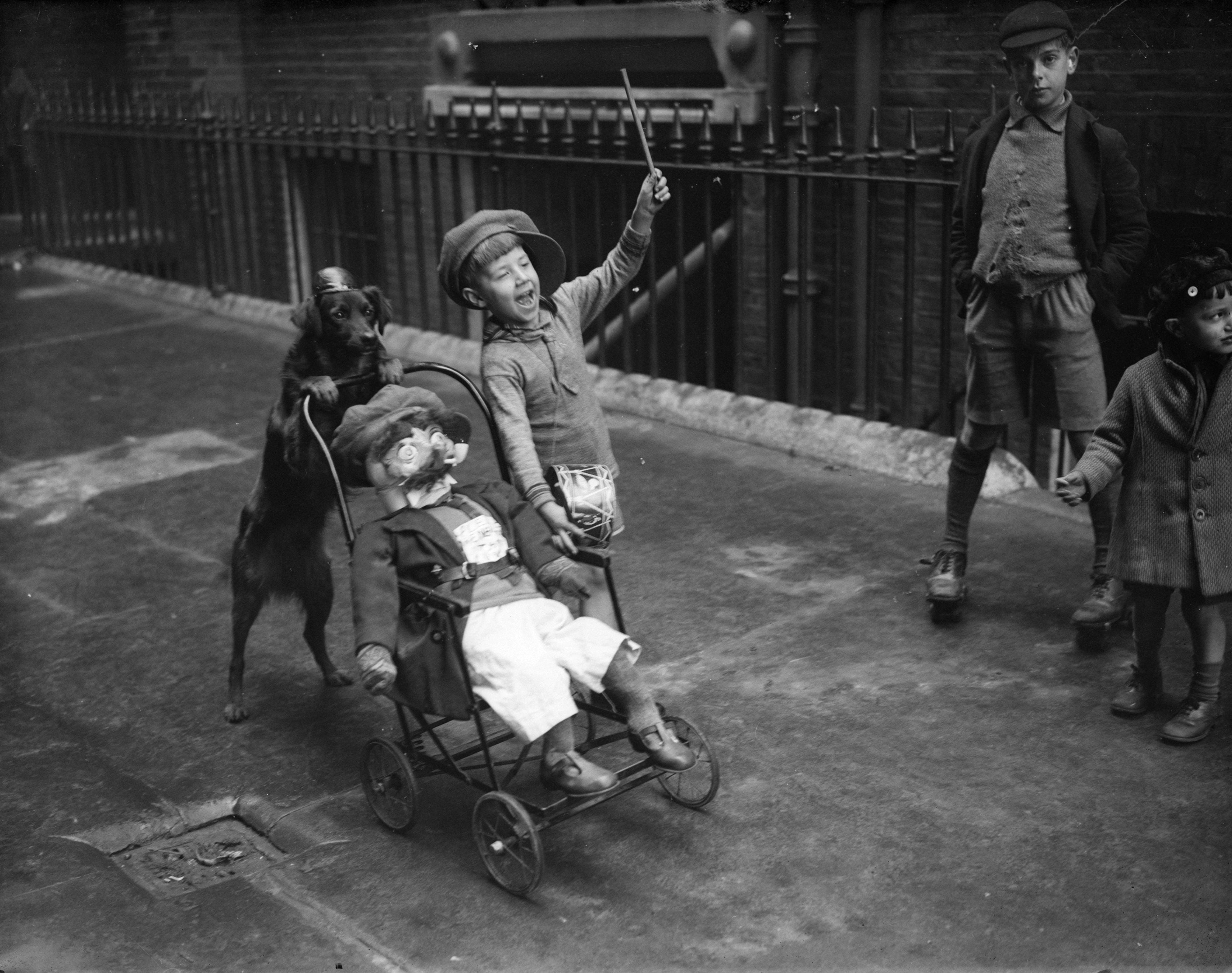
We should talk a little about the Gunpowder Plot, though. Let us invite to our bommy Steve Hayes, who is the director of communications for a large housing association by day but has a deep and abiding passion for history, which he shares through his podcast History Shot. As History Shot aims to give a good understanding of issues in seven minutes or less, he’s the perfect chap to give us a summary of the Gunpowder Plot. Here, Steve: have an overdone potato and fill us in.
Over the centuries there have been many violent confrontations on Bonfire Night due to the religious undertones
“Few dates capture the British public’s imagination more than 5 November. The fact that more than 500 years later we gather together on a chilly November evening to burn the effigy of Guy Fawkes, and hear the bangs and pops that never were, says everything about the enduring significance of this date in British history,” Steve says. “The plotters were devout Catholics who wanted to kill King James I and lead a Catholic revolution by blowing up the Houses of Parliament during the state opening.
“The plot was, in reality, the culmination of centuries of religious turmoil, which had gripped England and the world and posed a constant threat to the king’s predecessor, Elizabeth I, during her reign.
“For many, the intrigue lies in how different the world could’ve looked had they succeeded.”
There’s something of a dissonance between the Gunpowder Plot and how we celebrate Bonfire Night, though. Guy Fawkes and his gang weren’t burned: they were hanged, drawn and quartered. So why do we burn him in effigy? Why a bonfire at all?
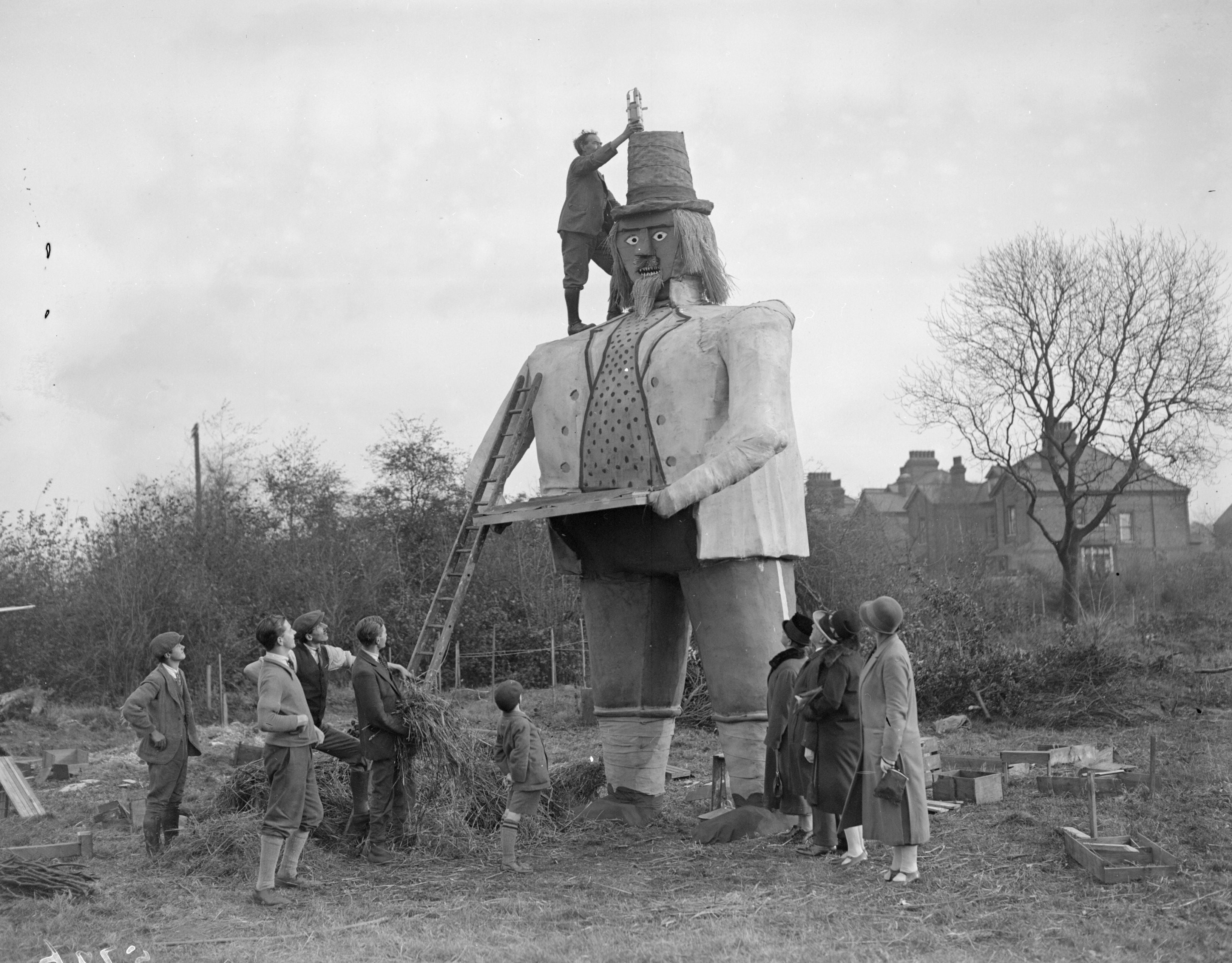
Steve says: “In terms of how 5 November became an annual celebration: parliament passed the Observance of 5 November Act (also known as the Thanksgiving Act) in early 1606 – declaring the date a national day of thanksgiving and celebration. It actually required church ministers to hold a service of thanksgiving on the day. The first time the anniversary was marked was a year later, and Bonfire Night as we know it today has grown from this.
“Burning dummies in bonfires dates back as far as the 13th century – to ward off evil spirits. So I think this is where it came from.
“Bonfire Night hasn’t always been as jolly though! It was the subject of huge anti-Catholic sentiment in the aftermath of the plot – sometimes people would burn effigies of the Pope.
“At some time, in the 18th century I believe, the focus of this became Guy Fawkes, or the Guy as it’s often known. The Guy would often be dragged through the streets in towns with children asking passers by for ‘pennies for the Guy’ before it was burned.
“Over the centuries there have been many violent confrontations on Bonfire Night due to the religious undertones. This was toned down in the mid-1800s and the Thanksgiving Act was actually repealed in 1859.
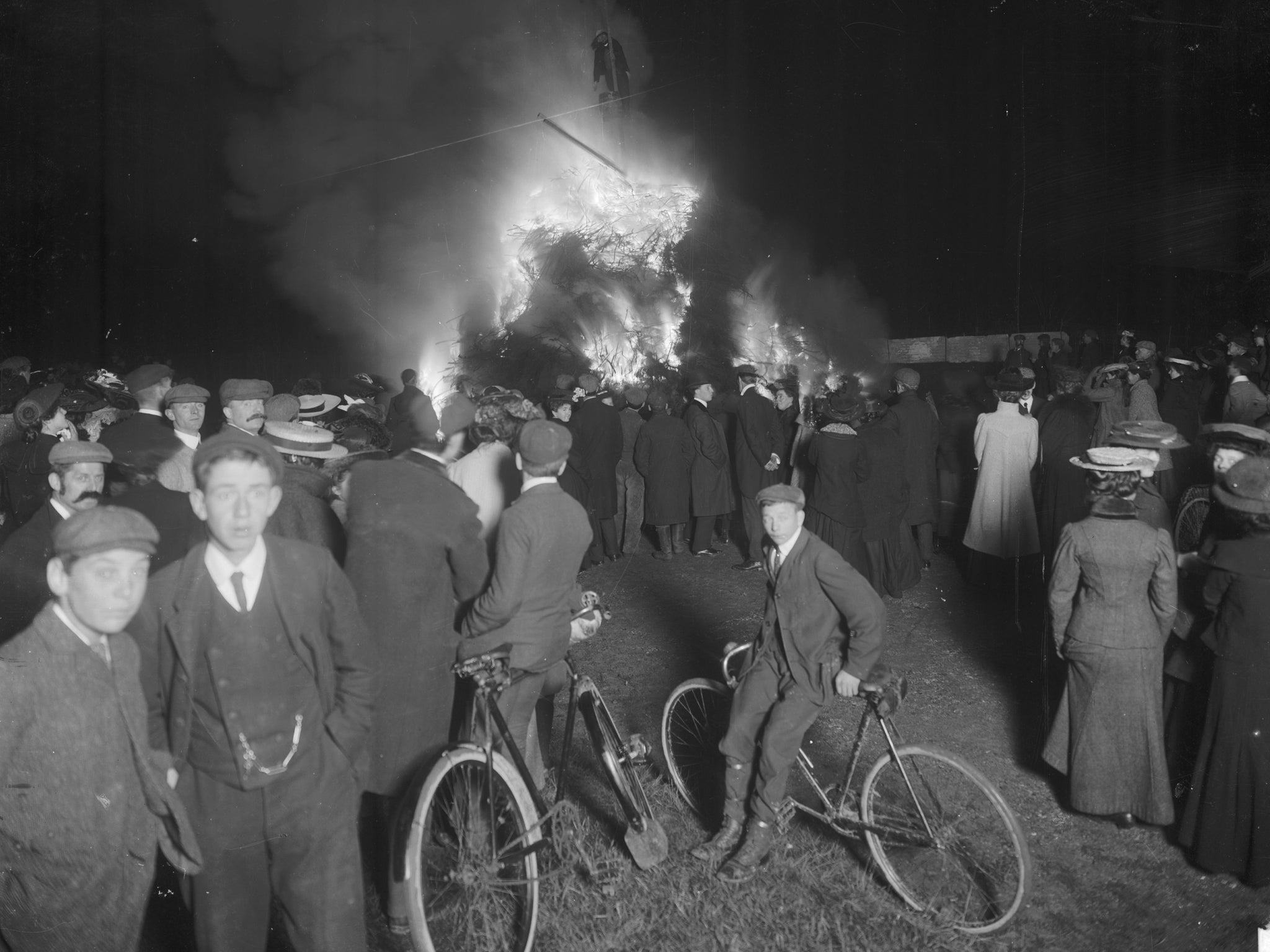
“By the early 20th century it had become a much more peaceful, social occasion, stripped of the religious fervour.”
Our Bommy Nights certainly felt like more of a folk event than being strongly allied to the Gunpowder Plot. And that’s probably because there’s some primal instinct in all of us, some genetic memory, that draws us to a bloody good fire. So it is to the deep, glowing embers at the heart of the fire that we travel next, for the roots of our fascination with bonfires.
For starters, where does the word “bonfire” come from? According to the good word folk at Merriam-Webster, purveyors of fine dictionaries, there is a school of thought that says it is a mash-up of the French word “bon”, meaning good, with the English “fire”. Literally a good fire. But the reality is probably darker than that.
According to Merriam-Webster: “The word is actually derived from the Middle English bonefire, meaning literally ‘a fire of bones’. The earliest appearance of the word is glossed ignis ossium – Latin for ‘fire of bones’.”
At this time of year a gathering around a communal fire was always seen as comforting, a place where warmth was found and tales could be told
Here’s Merriam-Webster’s citation, from Liber Festivalis written by John Mirk in 1486: “But in worshipp of seinte iohan the people woke at home & made iij maner of fyres. On was clene bones & no wode & that is callid a bone fyre. A nothir is clene wode & no bones & that is callid a wode fyre fore people to sitte & to wake there by.”
A bone-fire, then – which speaks of older, more pagan traditions. Let’s budge up by our fire and welcome a storyteller, Owen Staton, host of the Time Between Times show, which he puts out on podcast and YouTube.
“Gatherings around large bonfires have always existed,” Owen tells us. “The flames were used as light and warmth and a way to ward off the eerie shadows and dangers that lived in the darkness. At this time of year a gathering around a communal fire was always seen as comforting, a place where warmth was found and tales could be told.”
A tradition that Owen fears might soon be lost. Like me, he grew up with the bonfires of the 1970s and 80s, and, he says, “I think it was the last golden age of Bonfire Night. Traditions like “Penny for the Guy” seem to have sadly vanished, eclipsed by the growing influence and commercialism of Halloween. I think, like many old traditions, the original meaning seems almost lost to time. Even the name Guy Fawkes Night seems to have faded away to be replaced by Bonfire or Fireworks Night.
“It’s a longstanding British tradition that mirrors many others all around the world. It will be interesting to see if it survives in the long term. The pandemic and Halloween’s seemingly unstoppable growth have maybe finally put an end to many of the community gatherings of old. However, the time of year and the growing darkness still hold a fascination that many find hard to let go of.”
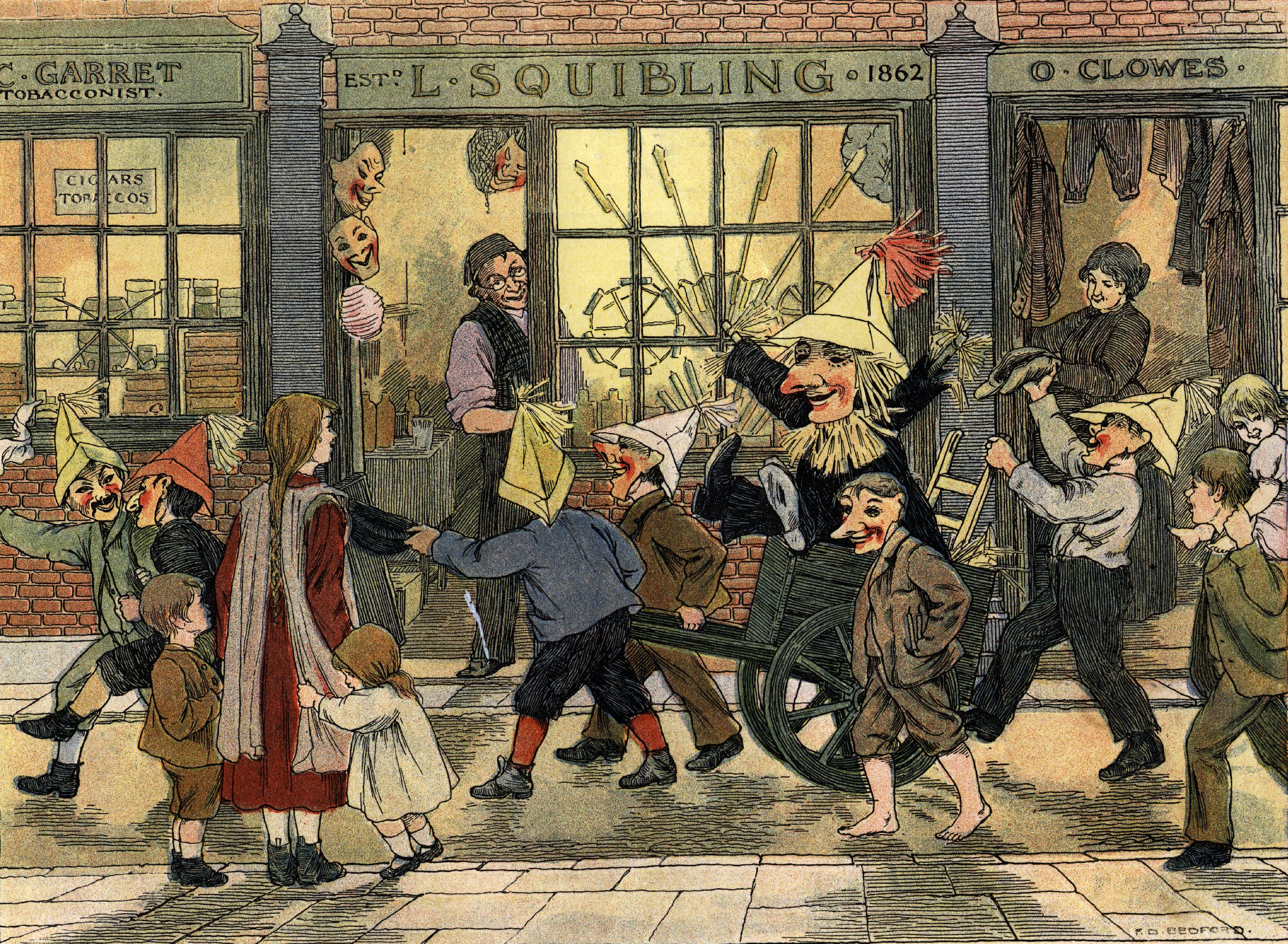
Bonfires were not limited to the winter months in our pre-Christian traditions. Beltane, which fell on 1 May and marked the onset of summer, was a great time for bonfires in the pagan tradition. Farmers would drive cattle between two bonfires, or around a large one, to ensure their productivity. People would smear themselves in ashes from the spent fires.
It’s likely that the tradition of a November bonfire goes back much further than Guy Fawkes, with Samhain, another major festival and marker in the Pagan calendar, falling around what we now know as Halloween. And on 23 June there is St John’s Eve, celebrated around the world with fire – in Croatia and other Slavic countries there is a tradition of revellers leaping over the fire.
Given that organised bonfires and firework displays are now the norm, Owen Staton might be right that the Bommy Nights of my youth are consigned to the social history books.
There is no actual law against the ad hoc bonfires we used to hold taking place any more, but rather a raft of regulations that make them impractical. Local councils can, for example, take action under the Clean Air Act 1993 if a bonfire, even one held in your own garden, emits a lot of smoke. You can be fined under the Highways Act 1980 if you light a fire that causes smoke to drift across a main road. The Environmental Protection Act 1990 forbids the burning of certain materials that used to be the lifeblood of Bommy Night – old furniture, for example.
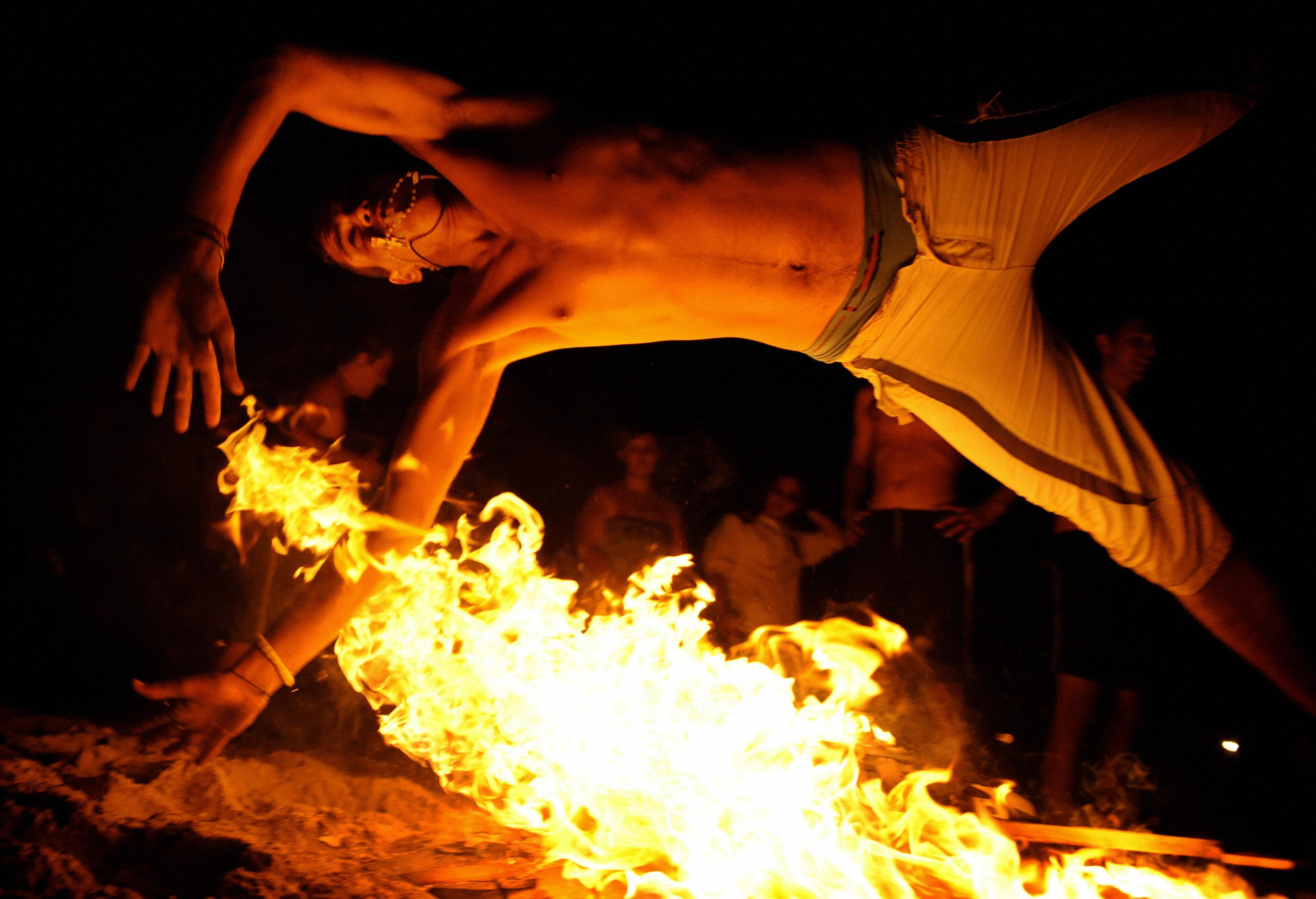
So however you celebrate 5 November, you are tapping into a deep and ancient well of mankind’s fascination with fire, and the use of bonfires to celebrate and protect, going back to the birth of humanity.
Fire gave warmth, and allowed us to cook, and warded off very real threats from the natural world. It also gave us protection from the evil mysteries of the night, bringing light to the darkness that was filled with things we didn’t understand and feared. We used fire in ancient times to give thanks, and to pray for a fertile and productive year to come.
We’ll never know how we discovered fire – that pivotal moment when, by accident or design, some proto-human created the spark that would transform – and most likely save – our species.
Or, perhaps, the ancient Greeks had it right, and Prometheus stole fire from the gods and gifted it to mankind. And for all these millennia we’ve used it for celebration and ritual and revelry, even if our bonfires today involve a more sanitised version, whereby our visits to Olympus for the gods’ magic flames are via organised events, rather than rolling up our sleeves and doing it for ourselves.
Join our commenting forum
Join thought-provoking conversations, follow other Independent readers and see their replies
Comments



Bookmark popover
Removed from bookmarks